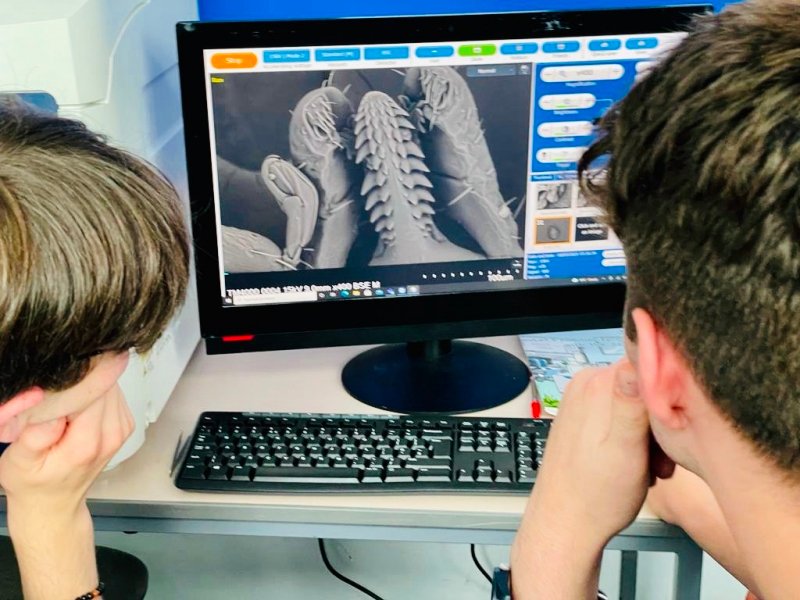A scanning electron microscope, usually only found in laboratories, has been getting the general public and school children up close and personal with insects and micro-organisms at the National Stone Centre in Wirksworth, Derbyshire.
The National Stone Centre was given a new lease of life in August when the Institute of Quarrying moved in with it at its 40-acre site comprised of six former limestone quarries (read more about that here).
Now the high-tech scanning electron microscope has given Derbyshire schools and community groups a rare opportunity to see the natural world in minute detail during workshops at the National Stone Centre.
This state of the art microscope can magnify objects to many thousands of times their original size, showing microscopic details of insects and microorganisms living on rocks, footpaths, and in the restored quarries.
The opportunity was made possible thanks to a collaboration with EarthBound, a project led by Derbyshire artists Kate Bellis, wildlife photographer Alex Hyde, and sculptor Sally Matthews, with support from the Longcliffe Community Fund from Longliffe Quarries and the Institute of Quarrying.
As part of the EarthBound project, the scanning electron microscope (SEM) was made available courtesy of a loan from the Hitachi High-Tech America STEM Educational Outreach Programme, with support from the Royal Microscopical Society, Oxford Instruments, The Institute for Research in Schools, Hitachi High-Tech Europe, and the Natural History Museum.
The Natural History Museum has been working with the EarthBound artists to prepare samples and train them to use the portable SEM so they can run sessions related to schools' curriculums, as well as for workshops with local community groups.
Anthony Elgey, Education & Skills Project Manager at the Institute of Quarrying, says: "The Institute of Quarrying was delighted to welcome the scanning electron microscope to the National Stone Centre. It’s an exciting project for the local community to get involved with and it fits well with the Institute’s STEM [science, technology, engineering & maths] outreach activities, which aim to engage future generations with the wider minerals industry."
Viv Russell, managing director of Longcliffe Quarries, says: "The whole project gives the industry an opportunity to show off its environmental and community credentials. It is a unique partnership between Longcliffe, the EarthBound project, the Institute of Quarrying and the National Stone Centre to demonstrate that there is a real living world beneath our feet and that as an industry we continue to protect and enhance it."
Alex Ball, head of imaging and analysis at the Natural History Museum, added: "I first met Kate Bellis and Alex Hyde during the Exhibition of the Hill, when it was exhibited in Peckham, London. At the time, I was really impressed with the community spirit that surrounded the whole project. It’s been great to be involved in the development of EarthBound and I’m so glad that we could send the SEM up to Wirksworth."
The SEM was at the National Stone Centre for one week (25–30 October) before continuing its tour to other regions. Among those participating in the sessions at the National Stone Centre were Anthony Gell School, Haarlem Art Space, University of the Third Age, and Derby Children’s Services.
One Year 8 pupil at Anthony Gell School said after looking at the SEM images: "Fantastic would be an understatement." A Year 7 student from the school remarked: "It was really cool looking at tiny things up close to see what they actually look like in detail."
Wildlife photographer Alex Hyde added: "Watching children and adults alike on the edge of their seats as they explore nature at a scale they never imagined possible has been incredibly rewarding. Time and time again Kate and I have witnessed the SEM bring out the inquisitive spirit in everyone who has used it. Together we have been on a voyage of discovery, learning a great deal about the little creatures that run the world."
EarthBound is a project aimed to inspire the next generation to better understand and respect life, microorganisms, and fungal networks in the earth. The SEM will return to the National Stone Centre as part of the EarthBound Show there next year, details of which will be announced on www.earthboundproject.co.uk in due course.

